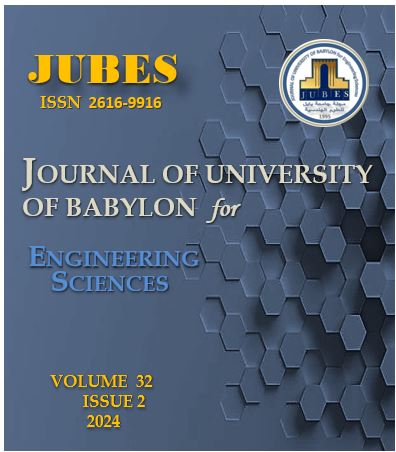Studying the Effect of Improving the Weak Subgrade by Use Halloysite Nanotubes on the Performance of Pavement Layers Using the Kenpave Program
Main Article Content
Abstract
The highways built on gypseous soil, often experience pavement cracking and early serviceability loss due to volume shifts caused by moisture content changes and traffic loads. This study aims to improve the geotechnical properties of gypseous soil using Halloysite nanotubes. The soil sample obtained from Ayn Al-Tamr in Karbala in southwest Iraq, has an average gypsum content of 30%. This soil is classified as SP according to [4] USCS and A-3 according to AASHTO. The laboratory experiment was done to evaluate the properties of untreated and treated samples using CBR test. The proportions (1.5, 2.5, 5, 7.5)% of Halloysite were added to the soil, and then these samples were subjected to testing. The laboratory data were analyzed using the Kenpave programme. The findings indicated that using Halloysite is a good and effective alternative to treatment the characteristics of gypseous soil by preventing gypsum from dissolving when it comes in contact with water and by enhancing the soil strength by increasing CBR values. The 2.5% Halloysite is the ideal percentage for enhancing the physical properties by filling voids between soil particles. An analytical method were used to study the behavior of gypseous soil that had been treated with 2.5% Halloysite. The data of the soil samples were fed into the Kenpave program. The analysis results used in the program indicate a decrease in strains. The fatigue and rutting of modified soil were low compared with natural soil because Resilient Modulus increased which leads to increasing fatigue and rutting life.
Downloads
Article Details
Issue
Section

This work is licensed under a Creative Commons Attribution 4.0 International License.
